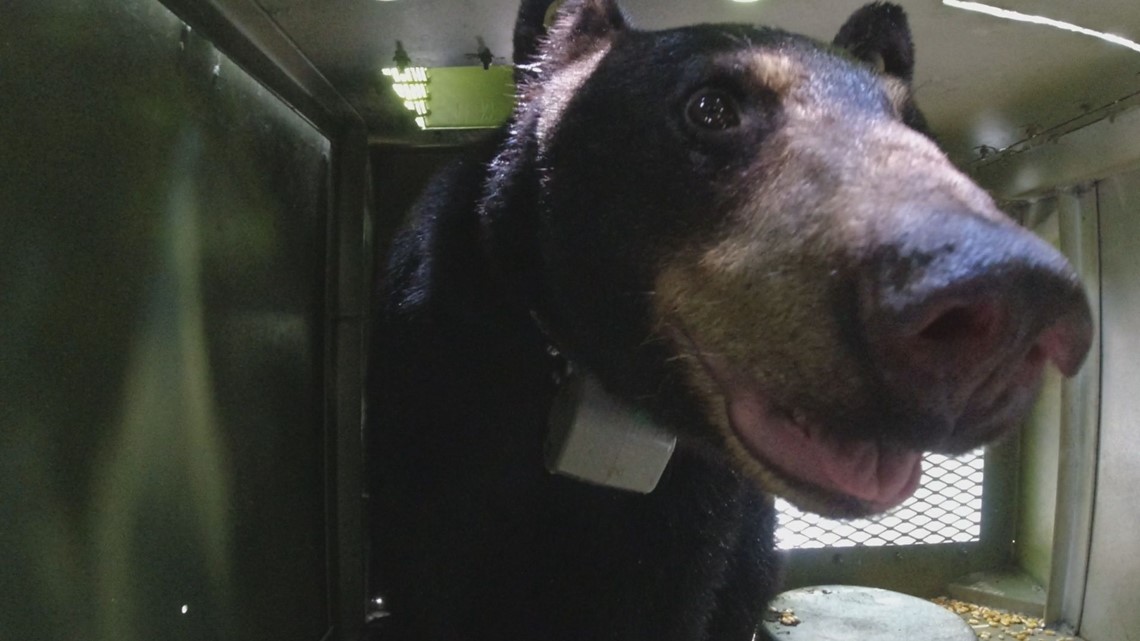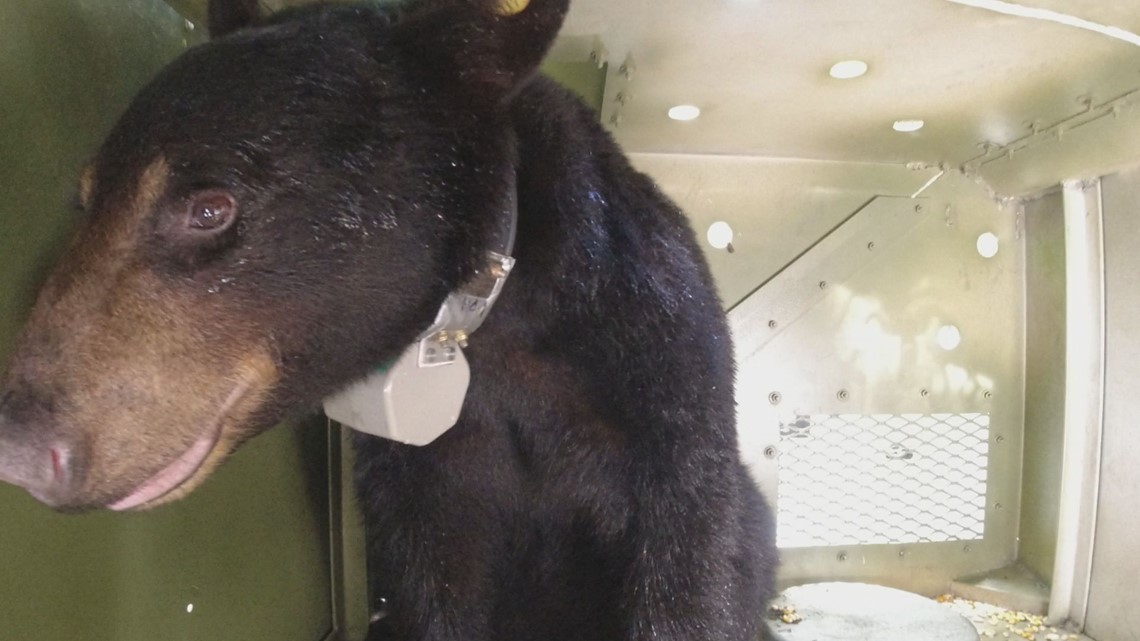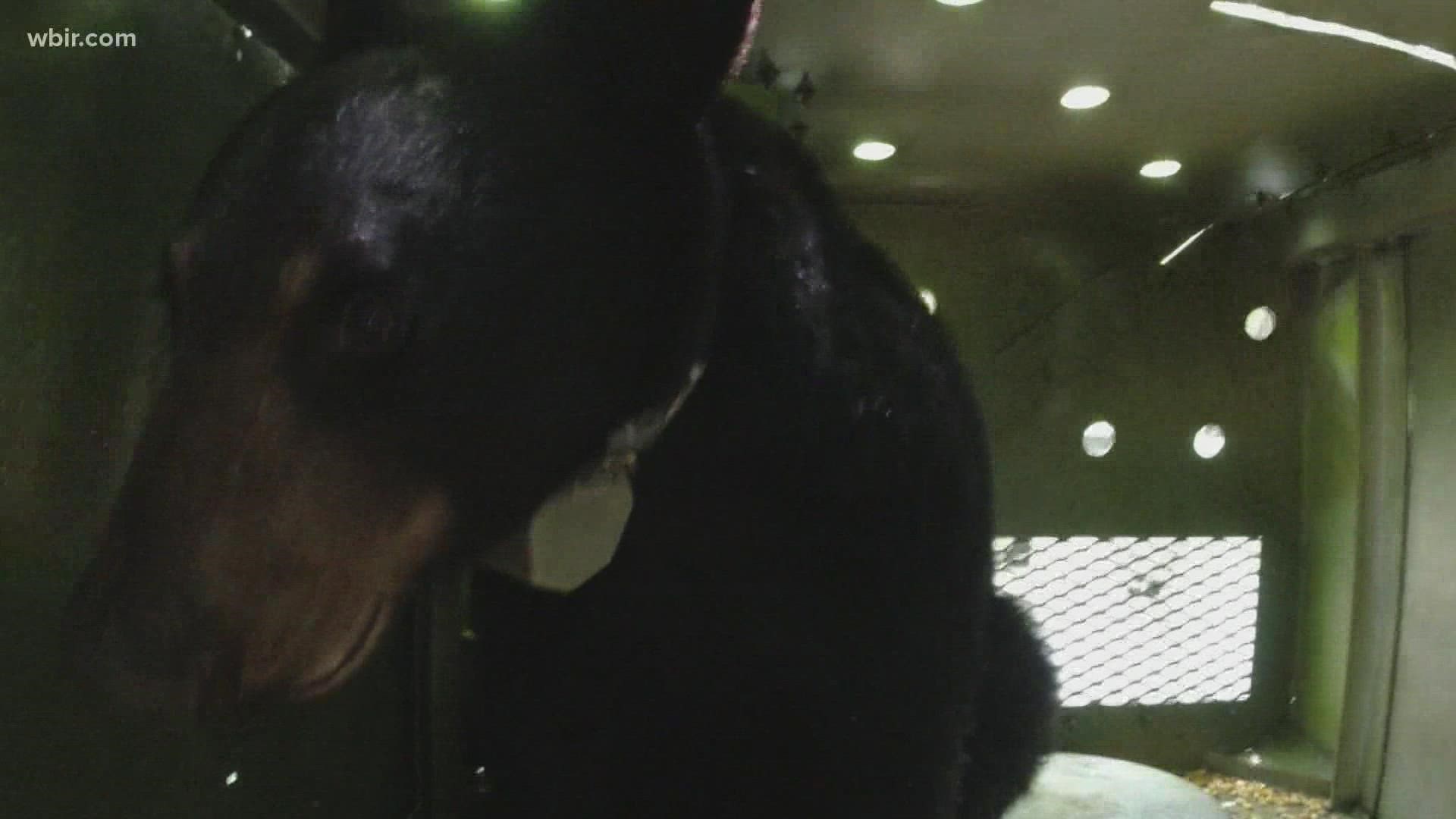GATLINBURG, Tenn. — It's hiking and camping season at the Great Smoky Mountains National Park. People are coming into the park in droves, and the bears are taking notice.
Wildlife biologists estimate more than 1,900 bears live within GSMNP. It's a habitat they share with the millions of visitors the park gets each year.
Some bears remain content with gathering berries and acorns. However, others are finding quicker and more convenient snacks.
"A lot of bears are getting very bold and approaching people trying to get their food," said Greg Grieco, one of the park's Wildlife Management Technicians.
Grieco gave an example of one female bear who caused quite a stir in the campground Tuesday. She walked around eating food off picnic tables, stealing backpacks and sniffing in trash cans.
"Every time I tried to run her away, she just came right back. So she was very persistent in the area," Grieco said.
He noticed the female from 2 years ago when she was alleged to have stolen a fisherman's backpack. On Tuesday, she was back at it again.
"You've got bears who look at people as an opportunity to steal food, and you've got bears who will not back down, who will maybe climb on cars, maybe push the limits. And so we don't want to get to that point," Grieco said.
That's why they decided to remove the female from the National Park and relocate her to South Cherokee National Forest in Polk County.
"We decided the best thing to do is to catch that bear and put a GPS collar on her and move her for a study we're doing on relocated bears," Grieco said.


The bear was transported in a bear cage on the back of a truck. Grieco stopped a few times during the drive to pour water on her fur so she didn't overheat in the sun.
Once Grieco drove up a forest service road, he climbed on top of the crate and unlocked the door. It took about 3 seconds for the female to rush out of the crate and into the thick forest.


However, this bear's story is far from over. In fact, for the park's wildlife biologists, her story has just begun. She will be tracked through her GPS collar for the foreseeable future.
The Great Smoky Mountains National Park got a $40,000 grant from the National Park Service to provide research around one question.
"We have resident bears and relocated bears ... and this study looks at, is the mortality rate different for one versus the other?" said Bill Stiver, a wildlife biologist within GSMNP.
Grieco said prior to this study, nobody really knew what effect relocating bears had on their survival. The study is still in its preliminary stages, but park officials said the early results are already eye-opening.
"The outcome really isn't that good. You know, some of the preliminary data is suggesting the majority of those bears are dying in some form or fashion within four months. Whether it's vehicle collisions, additional conflict, hunter-killed, and things of that nature," Stiver said.
This is why officials with the national park are urging people to be smarter about the ways they interact with black bears.
"If people want to help these bears not be relocated by us and potentially not be legally harvested, the best thing for them to do is to be as bear wise as possible," Grieco said.

